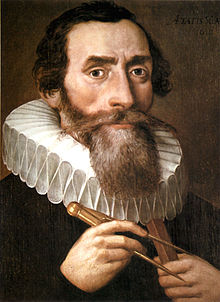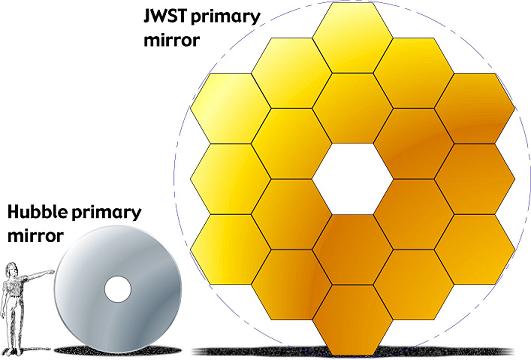The night sky, with its twinkling stars and shimmering lights, has fascinated human beings for generations.

Prehistoric man studied the night sky with the naked eye and used his observations for timekeeping, agriculture, and navigation.
And from the dawn of civilization, human beings have sought to understand and predict how the universe works. In fact, astronomy is considered the first and oldest natural science.
In this article, you will get an overview of the history of astronomy starting from antiquity to the modern times.
Prehistory

The history of astronomy dates back to antiquity. Celestial phenomena played a big part in the beliefs and practices of prehistoric men and women.
With their naked eye, they could spot the sun, the moon, the stars, and other celestial phenomenon.
Even back then, people could relate these objects and their movements to seasons, rain, drought, and tides.
They used their observations for practical purposes such as telling time, determining the time to plant, timing spiritual practices, and for navigation.
Even though the stone age man didn’t have formal ways to document their observations, historical records such as rock drawings and petroglyphs show that the Native Americans, Central Americans, North Europeans, and early Chinese cultures all practiced astronomy. These records include:
- Polyglyphs dating from the Bronze Age (2900–1800 BC) show images of the sun and the star group known as the Pleiades.
- The Stonehenge monument, dated to about 3100-1520 BC, features multiple astronomical alignments indicating it may have been a stone age astronomical site. Some speculate that it may have even been used to track and predict eclipses.
- The Nebra Sky Disk, a bronze age plate dated to about 1600 BC, bears images of the crescent moon, the sun, and the Pleiades cluster of stars.
- In 1054 BC, the Chinese, the Anasazi, and the Native Americans all recorded the supernova explosion that resulted in the Crab Nebula.
Western Astronomy
Formal western astronomy originated in ancient Babylonia, in Central Time Mesopotamia.
From as early as the BC era, people were making efforts to try and understand the motions and characteristics of celestial bodies and to determine the size and structure of the universe.
Because astronomy played a significant part in religious matters, the first astronomers were priests.
These temple astronomers diligently kept diaries of their night to night observations.
As a result, they were able to make some accurate observations and predictions as follows.
- The planets Mercury, Venus, Mars, Jupiter, and Saturn were discovered by Babylonian astronomers in the first and second millennia.
- Thanks to their meticulous record keeping, the Babylonian astronomers were also able to predict the behavior of the moon and the five planets they could see.
- During the Hellenistic civilization that followed the conquest of Alexander the Great, Greek astronomers took over where the Babylonians had left. Using mathematical models, they were able to calculate the motions of the planets and predict eclipses.
- In the 2nd century BC, Hipparchus compiled the first catalog of stars and named the constellations.
- Plato, Aristotle, and Claudius Ptolemy proposed the geocentric model that placed the Earth at the center of the Universe with the planets orbiting the earth in circular orbits.
- Aristarchus (~310-230 BC) came up with the controversial heliocentric model that claimed that the sun, instead of the earth, was at the center of the solar system with the Earth and other planets orbiting it in a circular motion. Unfortunately, many records of astronomical data including his work were lost in the great fire in Alexandria.
- Eratosthenes (276-197 BC) was able to estimate the circumference of the Earth with an impressive accuracy. His calculations yielded a circumference of 40,250 km, which is very close to the current value of 40,075 km!
- The year 964 is when the Andromeda galaxy was first observed. This became the first documented observation of another galaxy, other than the milky way.
The Copernican Revolution
Before the renaissance period, it was generally accepted that the universe was perfect and that the Earth was the center of the universe with all other celestial bodies orbiting it in perfect circular motions.
This Philosophy was embraced by the church and became the foundation of Church doctrine and university instruction during medieval times.
The Renaissance period saw the rise of many revolutionary ideas that challenged these beliefs.
The Copernicus revolution is named after Polish astronomer Nikolas Copernicus (1473-1543) who in 1543 dared to challenge church doctrine by reintroducing the heliocentric model that had the sun at the center of the solar system.
During this period, Tycho Brahe (1546-1601), a Danish Noble and astronomer, became astronomy’s first true observer. Using sextants and quadrants he constructed himself (the telescope still had not been invented), he was able to measure positions of planets and stars with a whole new level of accuracy.
History of Modern Astronomy

Modern astronomy only began in the 17th century with Johannes Kepler’s (1571-1630) discoveries.
Using Brahe’s precise observations, Kepler was able to deduce that the planetary orbits were indeed elliptical not perfect circles.
After developing the law of Universal Gravitation and the laws of accelerated motion and inventing calculus, Sir Isaac Newton (1642-1727) managed to explain why the planets move the way they do.
From the dawn of civilization until the Copernicus revolution, astronomical activities were dominated by the study of the motions of celestial bodies and the accurate predictions of their behavior.
With Kepler’s and Newton’s discoveries, the goal of accurate prediction was finally achieved.
1609 was the year the telescope was invented. After constructing his own telescope, Galileo Galilei (1564-1642) became the first person to study the night sky through the lens of a telescope.
Of course, this means that he was able to observe much more details than was previously possible. His game changing discoveries included:
- Craters on the moon
- Spots on the sun
- Venus had phases
- Jupiter had moons
Having pioneered the use of telescopes to study the heavens, Galileo became the father of modern astronomical observation.
Sir Isaac Newton’s development of the theory of light and invention of the reflecting telescope were also game changers.
Astronomy in the 20th Century
Despite the long history of astronomy, most of our current knowledge of the universe was only gained during the 20th century.
Thanks to the use of imaging technology, faint objects could be observed and studied.
Improvements in satellite launch in the early 1960s also allowed astronomers to collect even more astronomical data.
NASA’s deep space probes such as Voyager and Voyager 2 have ventured further into space than ever before.
Some of the notable discoveries of the 18-20th century include:
- Discovery of the outer planets
- Proving the existence of other galaxies
- Discovery that the universe is expanding as evidenced by the recession of the other galaxies from us
Astronomy Today
Today, astronomers collect data about celestial objects by using large telescopes on the ground or launched into space.
These modern telescopes are equipped with massive mirrors that allow astronomer to detect even very faint and faraway objects.
An example of such a telescope is the James Webb Space Telescope. Boasting a sheer 6.5-metre-diameter mirror and equipped with high precision instruments, it’s set to give astronomers a groundbreaking glimpse of the universe.

To Wrap Up
Astronomy has come a long way since the pre-historic days. But while we know quite a bit now, a lot still remains to be discovered and studied.
Thankfully, we now have complex telescopes and advanced imaging technology to help us capture even faint and distant phenomena and study them in much more detail.
The future of astronomy definitely has a lot more exciting discoveries in store for us!
